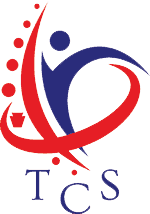Occupational Therapy for Chronic Pain and Hypermobility in Camp Hill, PA



What We Help With
Joint hypermobility occurs when joints have a greater range of motion than would typically be expected. Sometimes this does not cause any pain or symptoms, but in many cases it does cause joint instability, increased risk of injury, pain, and other symptoms. There may be a diagnosis of Hypermobility Spectrum Disorder, Hypermobile Ehlers-Danlos Syndrome, a different condition, or a diagnostic evaluation may not have been completed yet. In any case, we understand the unique challenges that may come with symptomatic generalized joint hypermobility. We also understand that these challenges are often complicated by other comorbid conditions, such as postural orthostatic tachycardia syndrome (POTS), mast cell activation syndrome (MCAS), and more.
We offer specialized occupational therapy services to children and adults experiencing symptomatic joint hypermobility.
(Why the Zebra? People with Ehlers-Danlos Syndromes or Hypermobility Spectrum Disorders often identify themselves as zebras. More details here.)
How occupational therapy supports chronic pain, fatigue, and hypermobility.
- Increasing nervous system regulation to support emotional regulation and symptom management
- Increasing interoceptive awareness for better understanding of your physical and emotional needs
- Individualized physical rehabilitation support, including guidance through the ADaPT or CHOP protocols for POTS rehabilitation
- Designing environmental accommodations to make daily tasks more accessible
- Activity modification to support fluctuating symptoms
- Improving daily functioning with energy conservation and pacing strategies
- Designing executive functioning supports to assist you in achieving day-to-day tasks, even when dealing with brain fog and low motivation
- Assistive technology and strategies for symptom management
- Managing all of these things while also navigating neurodivergence, which is common in the hypermobile population
Affirming, Trauma-Informed Care for Adults and Youth
- We understand, because some of our providers live with these conditions too.
- We have invested in additional education from experts leading the field, including EDS ECHO through the Ehlers-Danlos Society, Dysautonomia International, and more.
- We have extensive experience working with neurodivergent children and adults utilizing an affirming, strength-based approach that we carry into our work with hypermobility.
- Our approach is holistic, and takes into consideration not only your physical symptoms, but also emotional and environmental factors to ensure that all barriers to participation are addressed. We collaborate with you to identify priorities, then provide solutions to help you get back to the things you want and need to do!
- Our approach includes the evidence-based chronic pain treatment Pain Neuroscience Education
- We utilize interventions including biofeedback, targeting strengthening for stability and nervous system regulation
What to Expect
Appointments are available either in-person or by telehealth to those living in Pennsylvania.
Evaluation
If you are having difficulty participating in any aspect of your daily life due to your hypermobility, we recommend scheduling an occupational therapy evaluation. No official diagnosis is needed. At your evaluation, we will speak with you to explore your concerns and challenges. We welcome your questions. We will listen. Please note that OT evaluations are NOT diagnostic evaluations, and are utilized only to identify functional challenges so that we may design your treatment plan if indicated.


Treatment
Research has shown that purposeful activity is the most effective and functional way to learn skills. We carefully design each session’s activities to target your goals in engaging, interesting ways. This will look different for each and every client. You will always have input into your sessions’ activities and goals, and will be given strategies to apply at home. You will also have 24-hour, secure access to your treatment notes, reports, and any other documents through your online client portal.
Achievement
Treatment plans will have a start and end date based on goals. Your therapist will frequently collaborate you to check in on your goals and progress. Therapy will end when you have achieved your goals, whatever that may look like for you. You are always welcome to return in the future if you have additional concerns or would like to explore additional strategies.

Payment
Detailed information for all clients is available on our insurance and payment page.
